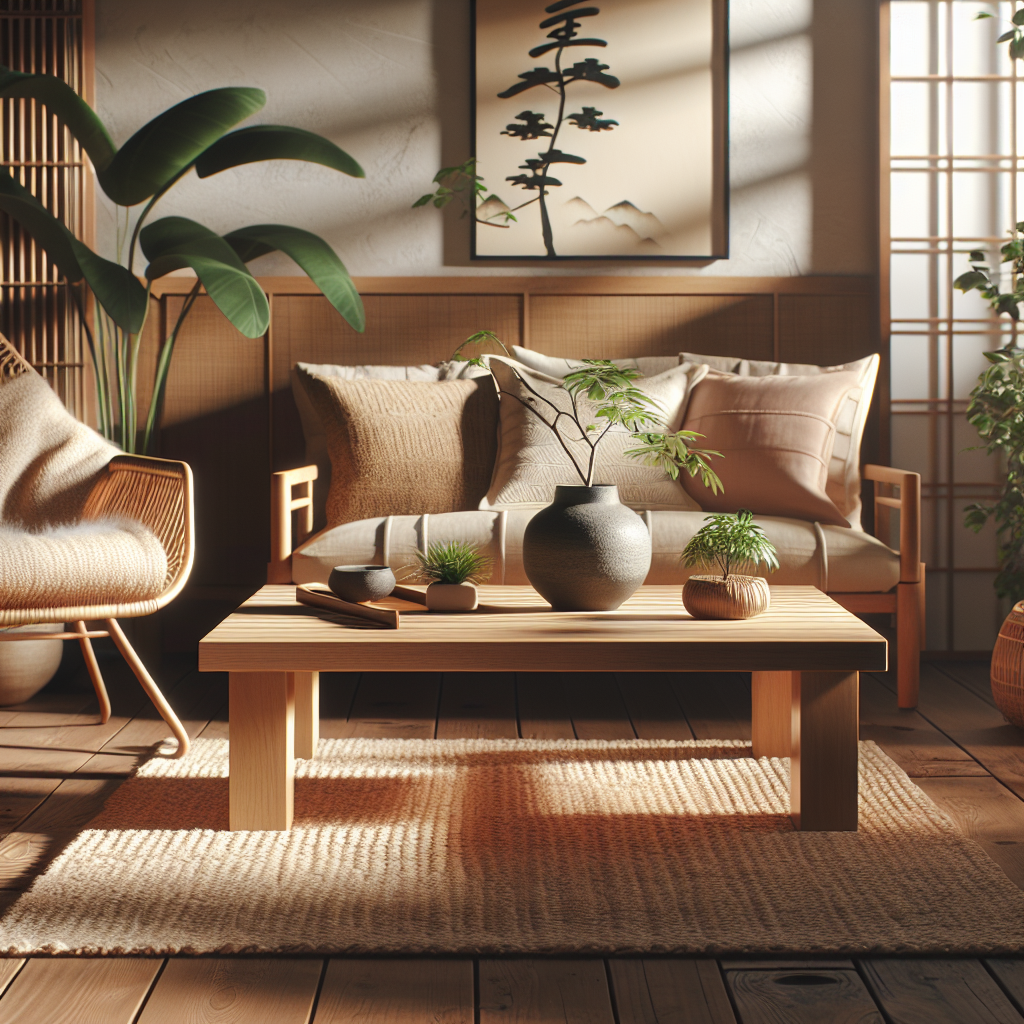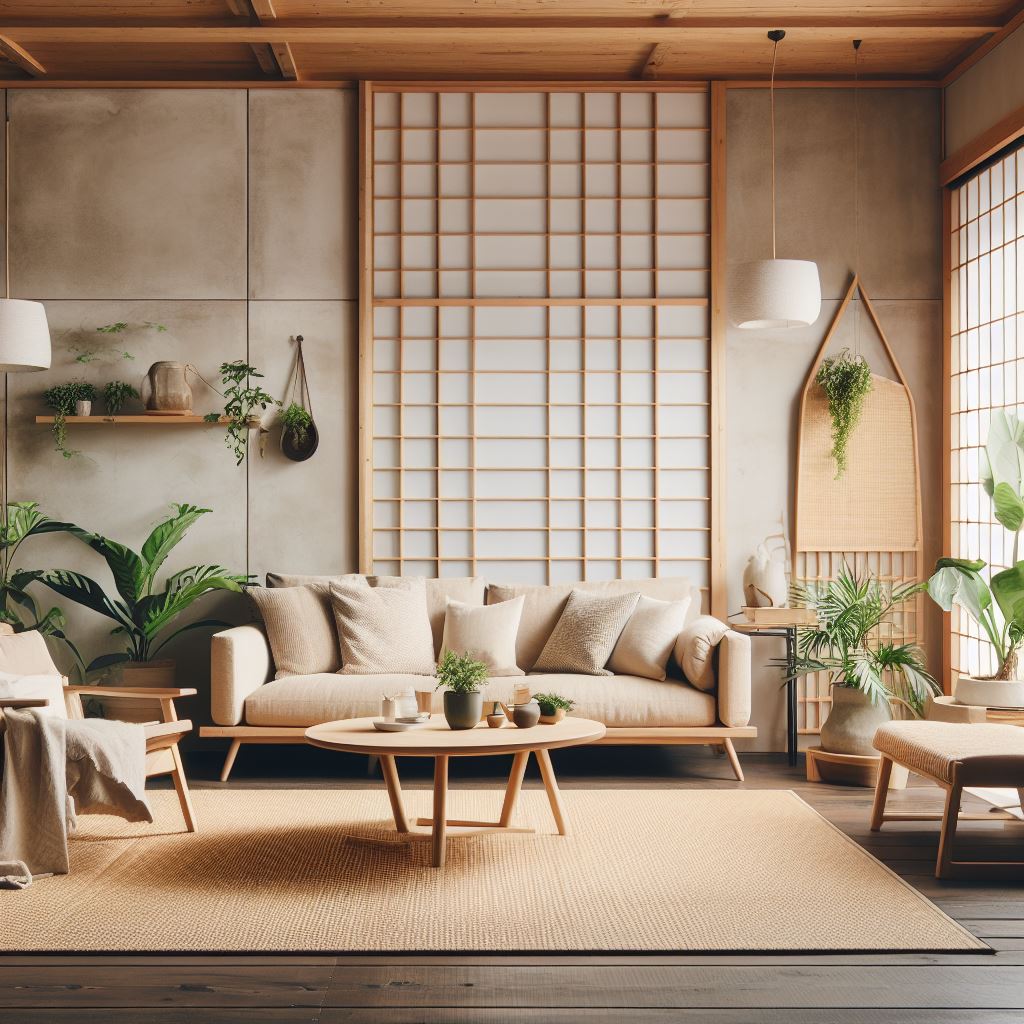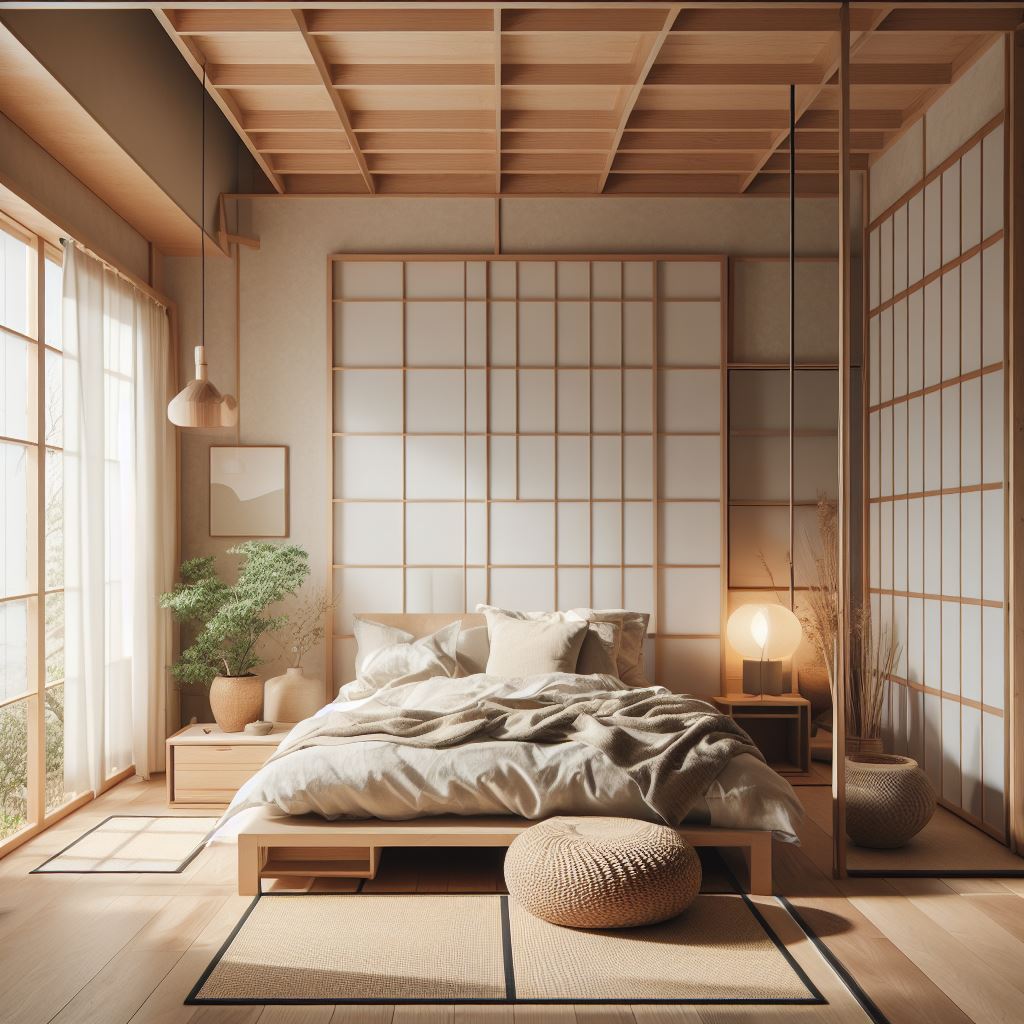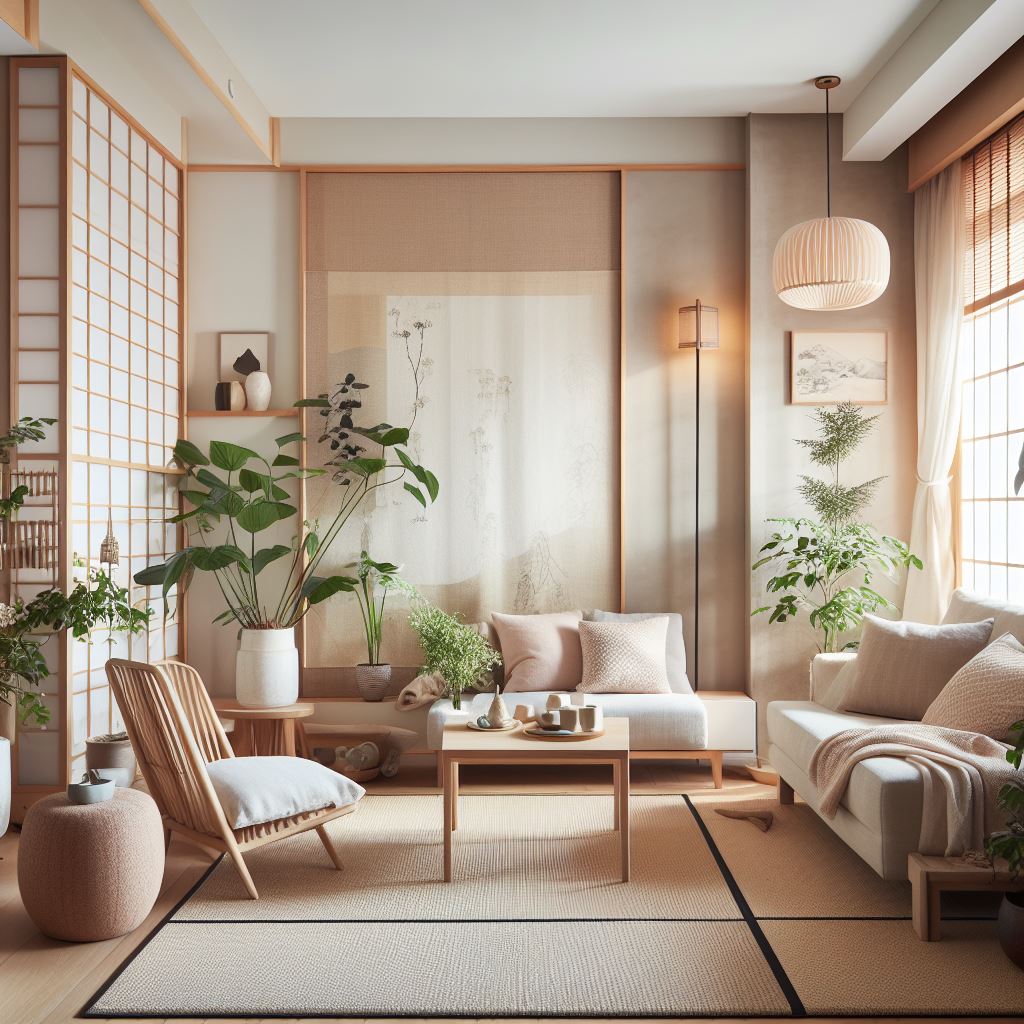Immerse yourself in the harmonious fusion of Japanese minimalism and Scandinavian simplicity with Japandi home decor. This unique design style combines the clean lines and functionality of Scandinavian design with the mindfulness and natural elements of Japanese aesthetics. Find solace in the uncluttered spaces, earthy color palettes, and thoughtful craftsmanship that create a serene and welcoming atmosphere. Whether you are seeking to create a calming oasis or a cozy retreat, Japandi home decor effortlessly blends these two iconic design philosophies to bring balance and tranquility to your living space.
What is Japandi Design?
Japandi design, also known as Japanese-Scandinavian design, is a unique fusion of traditional Japanese aesthetics and minimalist Scandinavian design principles. This design style is characterized by its emphasis on simplicity, functionality, and natural elements. Japandi design aims to create a harmonious balance between the warm and cozy elements of Scandinavian design and the serene and minimalist aspects of Japanese design.
Influences and Origins
Japandi design draws its influences from the serene and minimalist aesthetics of traditional Japanese Zen philosophy, as well as the functional and practical approach of Scandinavian design. By blending these two design philosophies, Japandi design aims to create a sense of tranquility and simplicity in the home.
The origins of Japandi design can be traced back to the mid-20th century, when Japanese design principles began to gain popularity in the Western world. As Scandinavian design also gained traction during the same period, designers and homeowners started to notice the similarities between the two styles. This led to the emergence of Japandi design as a unique and harmonious blend of both aesthetics.
Key Elements of Japandi Design
Japandi design is characterized by several key elements that help create its distinct aesthetic. These elements include:
- Minimalism: Japandi design embraces the minimalist approach of Scandinavian design, focusing on clean lines, uncluttered spaces, and a sense of openness.
- Natural Materials: Japandi design incorporates natural materials, such as wood, stone, and bamboo, to create a connection with nature and evoke a calming atmosphere.
- Neutral Color Palette: Japandi design favors a neutral color palette, including shades of white, beige, gray, and earth tones, which create a sense of tranquility and serenity.
- Balance and Simplicity: Japandi design values balance and simplicity in every aspect, from furniture arrangements to decorative elements, creating a harmonious and calming environment.
- Functionality and Practicality: Japandi design emphasizes the functionality and practicality of furniture and accessories, ensuring that every item serves a purpose while also being aesthetically pleasing.
The Philosophy Behind Japandi Design
Balance and Simplicity
At the core of Japandi design is the philosophy of balance and simplicity. Inspired by Japanese Zen philosophy, Japandi design seeks to create a harmonious and well-balanced space by carefully selecting and arranging furniture and decor items. This philosophy encourages the elimination of excess and clutter, promoting a simpler and more peaceful living environment.
Natural Materials and Sustainability
Another important aspect of Japandi design is the use of natural materials and a focus on sustainability. By incorporating elements such as wood, bamboo, and stone, Japandi design aims to bring nature indoors and create a sense of harmony with the environment. Additionally, Japandi design promotes sustainable choices by favoring furniture and decor made from recycled or eco-friendly materials.
Embracing Minimalism
Japandi design, like Scandinavian design, embraces minimalism as a key principle. By focusing on essential elements and decluttering the space, Japandi design creates visually pleasing and functional interiors. This minimalist approach allows for a calm and peaceful atmosphere, free from distractions and unnecessary complexities.

Colors and Textures in Japandi Design
Neutral Color Palette
The color palette in Japandi design is predominantly neutral, consisting of soft and muted tones. The use of whites, beiges, grays, and earthy colors creates a serene and soothing ambiance. These neutral hues allow for a sense of balance and harmony, while also providing a versatile backdrop for layering textures and adding pops of color through accessories.
Contrasting Textures
In Japandi design, textures play a vital role in adding visual interest and depth to the space. By incorporating a mix of smooth and rough textures, such as polished wood, rough stone, and soft fabrics, Japandi design creates a tactile experience that appeals to the senses. The careful juxtaposition of these contrasting textures adds complexity and warmth to the overall aesthetic.
Furniture and Accessories in Japandi Design
Functionality and Practicality
Functionality and practicality are key considerations in Japandi design. Furniture pieces are chosen for their purpose and utility, with a focus on clean lines and minimalist forms. Japandi design emphasizes the idea of “less is more,” favoring furniture that serves multiple functions and eliminates unnecessary clutter.
Clean Lines and Minimalist Forms
Japandi design embraces the simplicity and elegance of clean lines and minimalist forms. Furniture pieces in Japandi design often feature sleek, straight lines and geometric shapes, creating a sense of order and organization. This minimalist approach allows the furniture to blend seamlessly with the overall aesthetic of the space.
Natural and Organic Materials
Japandi design prioritizes the use of natural and organic materials for furniture and accessories. Wood, bamboo, and rattan are commonly incorporated to bring a sense of warmth and nature into the space. These natural materials not only add visual appeal but also contribute to the overall sustainability and eco-friendliness of the design.

Japandi-Inspired Lighting
Soft and Warm Lighting
In Japandi design, lighting plays a crucial role in creating a cozy and welcoming ambiance. Soft and warm lighting fixtures, such as pendant lights and floor lamps with warm-toned bulbs, are preferred to create an intimate and relaxing atmosphere. The aim is to achieve a balance between functional lighting and a soothing ambience that enhances the overall Japandi aesthetic.
Natural Light and Large Windows
Incorporating natural light is essential in Japandi design. Large windows are favored to maximize natural light intake and establish a connection with the outdoors. Natural light creates a sense of openness and serenity, enhancing the overall Japandi aesthetic. Window treatments are kept minimal, allowing the light to flow freely and celebrate the beauty of simplicity.
Achieving a Japandi Aesthetic in Your Home
Decluttering and Minimalist Approach
To achieve a Japandi aesthetic in your home, start by decluttering and adopting a minimalist approach. Remove unnecessary items, embrace the concept of “less is more,” and choose furniture and decor pieces that serve a purpose. Focus on creating clean and uncluttered spaces that promote a sense of tranquility and simplicity.
Combining Japanese and Scandinavian Elements
Blend Japanese and Scandinavian elements in your design scheme to achieve a true Japandi aesthetic. Incorporate traditional Japanese elements, such as shoji screens or tatami mats, alongside Scandinavian furniture and decor pieces. Strike a balance between the warm, natural elements of Japanese design with the minimalist, functional aspects of Scandinavian design.
Incorporating Natural Elements and Plants
Bring nature indoors by incorporating natural elements and plants into your Japandi design. Use wood, bamboo, and stone in your furniture and decor choices. Introduce greenery through potted plants, bonsai trees, or fresh flowers to create a sense of harmony and tranquility.
Balancing Tradition with Modernity
Achieving a Japandi aesthetic involves balancing traditional elements with modern design sensibilities. Seamlessly integrate traditional Japanese elements with contemporary Scandinavian designs to create a harmonious blend of the two styles. Embrace the simplicity and functionality of modern design, while still honoring the traditional aesthetic principles of Japanese design.
Key Differences Between Japanese and Scandinavian Design
Japanese Design Philosophy
Japanese design philosophy is deeply rooted in tradition, nature, and spirituality. It emphasizes simplicity, subtlety, and a deep appreciation for the beauty of imperfection. Japanese design often incorporates natural materials, such as wood and bamboo, and embraces elements such as minimalism, asymmetry, and organic forms. Traditional Japanese design also pays great attention to craftsmanship and the use of traditional techniques.
Scandinavian Design Philosophy
Scandinavian design philosophy, on the other hand, is characterized by simplicity, functionality, and minimalism. It values clean lines, uncluttered spaces, and natural light. Scandinavian design seeks to create practical and functional spaces while maintaining a warm and inviting atmosphere. Scandinavian designers often emphasize the use of natural materials, such as wood and leather, and prioritize quality craftsmanship.
Cultural Influences on Design
The differences between Japanese and Scandinavian design stem from their respective cultural influences. Japanese design is deeply influenced by the country’s rich history, Zen philosophy, and connection with nature. Scandinavian design, on the other hand, is shaped by the region’s harsh climate and a desire to create warm and cozy interiors that counterbalance the long, dark winters.
Examples of Japandi Home Decor
Living Rooms
In Japandi-style living rooms, you will find a mix of clean-lined Scandinavian furniture and Japanese-inspired elements. Picture a minimalist sofa with sleek lines paired with a low, coffee table made from natural wood. Add cozy Scandinavian textiles, such as sheepskin throws or knitted blankets, for warmth. Keep the color palette neutral, with pops of earth tones for visual interest.

Bedrooms
Japandi bedrooms are designed to be soothing and serene. Opt for a low platform bed with a minimalist headboard made from natural wood. Choose bedding in soft, neutral colors and textures, such as linen or cotton. Incorporate Japanese-inspired sliding doors or shoji screens to separate the sleeping area from the rest of the room. Keep the lighting soft and warm, with bedside lamps or pendants that emit a gentle glow.

Bathrooms
In Japandi bathrooms, simplicity and functionality take center stage. Choose sleek, minimalistic fixtures in neutral tones, such as matte white or black. Incorporate natural materials, like wooden countertops or bamboo accessories, for warmth. Add a touch of Japanese influence with a freestanding soaking tub or a small indoor Zen garden to create a calming and spa-like atmosphere.
Kitchens
Japandi kitchens blend clean lines with natural elements and practicality. Opt for sleek, handle-less cabinetry in light wood tones to create a minimalist look. Incorporate open shelving to display ceramic dishes or handmade pottery, reminiscent of both Japanese and Scandinavian design traditions. Use simple and functional kitchenware in muted tones, such as white or gray, to maintain a calm and uncluttered aesthetic.
Where to Find Japandi-Inspired Home Decor
Online Retailers
Numerous online retailers offer a wide range of Japandi-inspired home decor items. Websites such as Scandinavian Design Center, Muji, and Etsy feature furniture, accessories, and textiles that embody the essence of Japandi design. Explore these platforms to find unique pieces that can transform your space into a harmonious blend of Japanese and Scandinavian aesthetics.
Local Boutiques and Interior Design Stores
Support local artisans and discover unique Japandi-inspired home decor by visiting local boutiques and interior design stores. These smaller, independent shops often showcase handcrafted furniture, ceramics, and textiles that blend Japanese and Scandinavian design elements. Browse through their collections to find one-of-a-kind pieces that will add a personal touch to your Japandi-inspired home.
Conclusion
Embracing Japandi design in your home allows you to create a harmonious and tranquil living space that combines the simplicity and functionality of Scandinavian design with the serenity and natural elements of Japanese aesthetics. By incorporating key elements such as minimalism, natural materials, and a neutral color palette, you can achieve a Japandi aesthetic that promotes balance, simplicity, and a connection with nature. Whether you’re starting from scratch or adding Japandi touches to your existing decor, this fusion of Japanese and Scandinavian design principles offers a timeless and inviting ambiance for your home.

